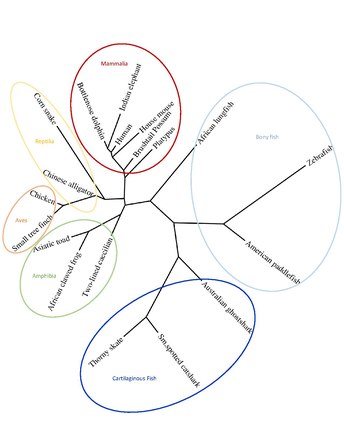Expression
RNA sequencing of C13orf42 shows expression in a variety of tissues including the spleen, kidney, heart, brain, testis, skin, esophagus, colon, small intestine, stomach, lung, placenta, salivary gland, thymus, and adipose. [3] RNA sequencing of human fetal tissue shows C13orf42 expression starting at 20 weeks in the intestine, 16 weeks in the kidney, 10 weeks in the lung, and expression in the stomach is seen at 16 weeks but not 10, 18, or 20 weeks. [3] Recorded RNA expression is very low, with all results being lower than 0.5 reads per kilobase of transcript per million reads mapped (RPKM). Microarray data from NCBI geo (GDS425) shows expression in additional tissues including bone marrow, liver, skeletal muscle, spinal cord, and pancreas. [6]








